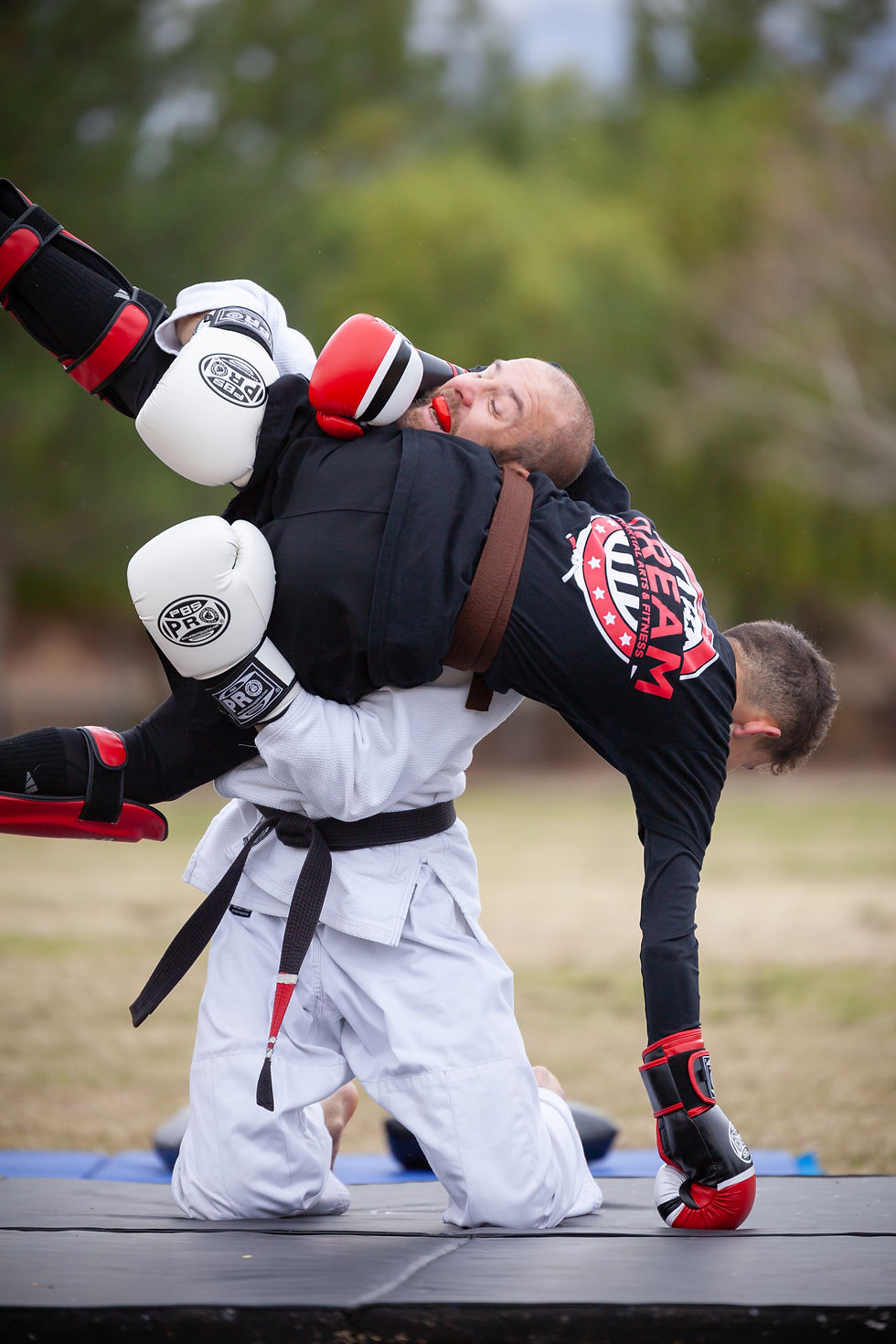What Other Martial Arts Apply to Jiu-Jitsu
- Dream Martial Arts and Fitness LLC
- Sep 5, 2022
- 2 min read
As a stand-alone martial art, Brazilian Jiu-Jitsu is incredibly nuanced, effective, and balanced.
But, we could also argue that other martial arts teach us valuable lessons we can use to elevate our Jiu-Jitsu performance in surprisingly effective and unexpected ways.
Without further ado, let’s take a look at four concrete examples:
1. Leverage And Weight Distribution
Learning how to use leverages and distribute your weight well are two crucial skills you need for Jiu-Jitsu success. It’s precisely leverage that allows smaller and weaker folks to overcome much larger and stronger opponents.
Martial arts like Judo and wrestling are fantastic for teaching leverage and weight distribution, which you can later apply on the BJJ mat with great success.
2. Takedowns And Submissions

Despite Judo and wrestling being unique from Brazilian Jiu-Jitsu, both arts can help you become a better BJJ practitioner. Specifically, Judo and wrestling can help you learn how to take somebody down and submit them in a way most Jiu-Jitsu practitioners wouldn’t expect.
For example, the front headlock is a dominant and effective position in wrestling, but some BJJ athletes overlook it and aren’t familiar with it.
3. The Clinch
The clinch is an effective way to get up close to your opponent and fight for a dominant position to set up a sweep (takedown). Jiu-Jitsu, in particular, also takes advantage of the clinch in some stand-up situations where using it can allow you to control the opponent’s head and set up takedowns.
The clinch is also quite popular in sports like kickboxing and Muay Thai. Practitioners use the clinch to control the opponent and find opportunities to take them down or land effective strikes.
Though not the same, learning different forms of the clinch can significantly benefit your BJJ performance.
4. Footwork, Positioning, And Distance
Though some criticize boxing as ‘an incomplete art,’ it can improve your BJJ practice significantly.

Specifically, boxing is great for learning:
Good footwork, how to stay light on your feet, and how to evade attacks
How to position yourself in relation to your opponent and gain the upper hand
How to control the distance to your advantage, when to retreat, and when to go in for an attack
Conclusion
Jiu-Jitsu is a nuanced and effective martial art that turns you into a self-defense master. But no matter how much time you spend learning and practicing, there is always something you can improve or adapt from another discipline.
If you’re looking for the right coach who can teach you a lot about everything we’ve gone over today, come down to Dream Martial Arts and Fitness in Santa Clarita. We offer various classes for people of all ages.




Comments